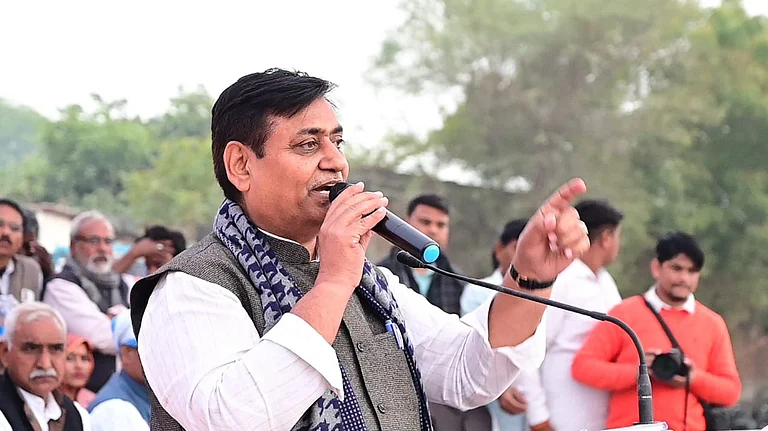In a bid to democratize and decolonise prisons in the country, researchers and activists have called for sustained prison reforms and have recurrently floated the idea of open or semi-open prisons time and again. The progress on these has, however, remained laggardly which has led to poor conditions of inmates in Indian prisons. Here we look at what the concept of open jails is all about and why activists advocate for a speedy implementation of the same:
What is an open prison?
Open prisons are jails devoid of high walls, barbed wire fences or armed guards to keep prisoners in check, and are simply regulated spaces that have less stringent rules relative to the traditional iron-clad prisons. The Rajasthan State Prison Rules define open jails as, "Prisons without walls, bars and locks" that fundamentally rely on self-discipline of inmates. Many open jails even allow prisoners to live in proximity with their families and earn their livelihood.
Open prison systems are premised on the Reformative theory of justice and punishment, as opposed to retributive theories of punishment, and advocates in favor of turning criminals into law abiding citizens without confining them. This standpoint highlights that man is sent to prison as punishment and not for punishment.
Smita Chakraburtty, a researcher on prison reforms and founder of an organization Prison Aid + Action Research (PAAR), has for long worked to enhance establishment and acceptability of open jails in India and told PTI that convicts in open jails don’t flee if provided with humane conditions as “minimum restraint often promotes discipline and gives them a sense of self-worth.”
What are the international precedents supporting open prison systems?
Open jails are not a new concept and have been a part of justice systems across the globe since centuries. In the early 19th century, open prisons in the United States for prisoners nearing the completion of their terms. Often such inmates were sent to work as laborers to evaluate their behavior. In fact, even in the United Kingdom, open prisons were common since the 1930s.
The global community first extensively discussed the need to incorporate open prison systems at the United Nations Congress On Prevention of Crime And Treatment of Offenders held in Geneva 1955.
More recently in 2015, the UN General Assembly unanimously adopted the United Nations Standard Minimum Rules for the Treatment of Prisoners, also referred to as the Nelson Mandela Rules, which laid down the objectives of open prisons. The rules stated that such a system can aid the rehabilitation of carefully selected prisoners, who are offenders considered at low risk of flight. They also established the prisoners’ right to employment and right to maintain contact with the outside world.
What has been the progress in India?
The concept of open jails is also not novel or alien for India, with the first open jail established as early as 1953 in the state of Uttar Pradesh where housed inmates were requisitioned to construct a dam over the Chandraprabha river in Varanasi.
Furthermore, in keeping with global calls for reformative jails, the All India Committee on Jail Reforms in 1980 also recommended the government to set up and develop open prisons in each state and union territory.
In India, Prisons are a state subject as per the seventh schedule of the Constitution and the state governments are the sole authority to set up open jails and determine which convicts can be lodged in one. Subsequently, at present, more than 150 open jails are operational in the country, of which Rajasthan houses the maximum (31), followed by Maharashtra, according to PAAR’s findings.
The most significant case study of an open jail in India is that of the Sanganer jail in Jaipur. Established in 1954, it hosts nearly 450 convicts currently, who live with their families and go out to earn their living. Praising the Sanganer jail administration, former Rajasthan Director General of Police (DGP) Ajit Singh told PTI that “Unlike some other open prisons in the country, the one at Sanganer allows people to go out to work. The setup at Sanganer ensures that people get to experience community living and reintegrate into the society without facing hassles or stigma.”
The Tamil Nadu Law ministry in May this year touted the idea of establishing open jails in the state for female convicts after a 2017 directive by the Supreme Court urged state governments to examine the feasibility of establishing open prisons across the country.
Why are activists urging governments to establish more open prisons?
First and foremost, the Constitution of India guarantees the fundamental right to every citizen to live a life with dignity under Article 21. Additionally, Article 39A under the Directive Principles of State Policy instructs the state to ensure effective justice delivery. Open jails are considered reformative and progressive correctional institutions that enable convicts to maintain contact with the mainstream so that they are not turned into sociopaths at the time of release.
Such a system is also advocated to address the issue of rampant overcrowding in Indian jails as well as the deteriorating mental health of inmates. As per the Prison Statistics of India Report 2020, over 15 states are currently operating at over 100% capacity, with seven states, namely Uttar Pradesh, Madhya Pradesh, Chattisgarh, Uttarakhand, Sikkim, Meghalaya and Delhi having an occupancy rate of 150%.
Furthermore, over 80% of the 6 lakh prisoners lodged in Indian jails are undertrials, wherein many are unable to access legal aid. During her fieldwork in Bihar’s prisons in 2014, Chakraburtty told PTI that she “realised that only a handful of people in regular jails are habitual offenders. There are many who have committed a crime by accident. Some were stuck there for years for not being able to afford legal help expenses. Many of them were denied humane treatment, a chance for rehabilitation.” In such a scenario, open jails are well suited to address these challenges.
Researchers say that open prison systems offer a more humane and equitable means of justice delivery. In this regard, Chakraburtty opines that “Open prison system, having stood the test of time, should now be made a norm In India. It is a cost-effective as well as a humane substitute for the prison cell.”
What are some issues with open jail systems?
One key concern with open prison systems at present pertains to the process of selection of criminals who can be lodged in such jails. A committee appointed by the state government makes the selections but is not required to record the reasons for the same, which leaves scope for ambiguity, bias and corruption.
Another significant loophole in legislation does not permit undertrial prisoners to be considered for open jails. The Prisoners Act of 1894 governs prison management in India, which was designed by a colonial government, and thus outdated and unfit for present assessments.
Additionally, many states have failed to enact laws to establish open prisons despite the apex court’s directives. In fact, no union territory presently has an open prison. Even the ones that have been established and are operational have remained under utilized due to poor levels of awareness and acceptability. As per data from 2015, open prisons have a cumulative capacity to accommodate 25,776 prisoners however, only 3,786 prisoners were lodged in them.
Studies also suggest that placing inmates in open prisons can also have a flipside wherein they turn dependent on the spaces and livelihood opportunities provided to them in thes open jails, and are then reluctant to vacate even after completion of their terms. This has been seconded by former DGP Singh, who revealed that “There have been instances when the convicts even refused to leave the open prison in Sanganer.”


























